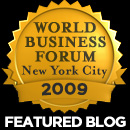Feb26
Andrea Meyer
Point: Too much VC funding can be just as bad as too little
Story: As a small young company, ViaWest had only $34 million in funding. But it faced massive competitors with $300 million and $800 million in war chests, respectively. These big competitors used their deeper pockets to “get big fast” — acquiring other companies, buying big office buildings, and investing in lots of shiny new large datacenters. But sales didn’t materialize and the big companies went bankrupt. In many ways, the money distracted these companies — they were looking for ways to spend it rather than focusing on their core innovation and business fundamentals.
In contrast, ViaWest used its money carefully and made positive cashflow a major goal. ViaWest focused on low-cost, efficient web-based tools to help it out-innovate — not out-spend — its bigger rivals. ViaWest also watched its asset investments carefully, only adding new capacity as needed when demand appeared. After the big competitors cratered, ViaWest bought some of the competitors’ lightly-used datacenter assets for pennies on the dollar.
Action: Use Web-based tools that let you innovate much faster at less cost. Create positive cashflow sooner rather than later. Create business forecasts for investment performance and stick to them — don’t invest more if the first investments aren’t meeting targets.
Capital, How-to
Feb12
meyerwk
Point: How do you spot an opportunity? Notice an anomaly and investigate it.
Story: Ted Nierenberg launches Dansk International Designs
In the mid-1950s, Ted Nierenberg attended an industrial fair in Germany. While at the fair, he noticed many booths displaying stainless steel flatware. This surprised Ted, because at that time in the US, stainless steel tableware only appeared in mess halls and school cafeterias, not homes or restaurants. Ted investigated: Why wasn’t stainless steel flatware more prevalent in the US? Answer: because it wasn’t very attractive. So Ted had an idea: could the flatware be made attractive yet remain inexpensive? He decided to investigate. First, he visited factories in Germany, checking equipment and costs. Then, he visited designers in Scandinavia to see if they were making anything that would appeal to American tastes. That was the genesis of the new business idea, producing what as considered paradoxical at the time: “elegant stainless steel.”
Action
In your daily experiences — and especially when attending special events like trade shows — look for patterns and anomalies. Do you see something that surprises you? Ask yourself why it surprises you. Chances are that it’s something new to you — and thus likely new to others as well. Investigate the surprise. Could you take part of it and apply it to a new product or service idea? Be particularly alert for paradoxes. Great opportunities exist in paradoxes because people consider paradoxes unresolveable.
How-to, Opportunity









